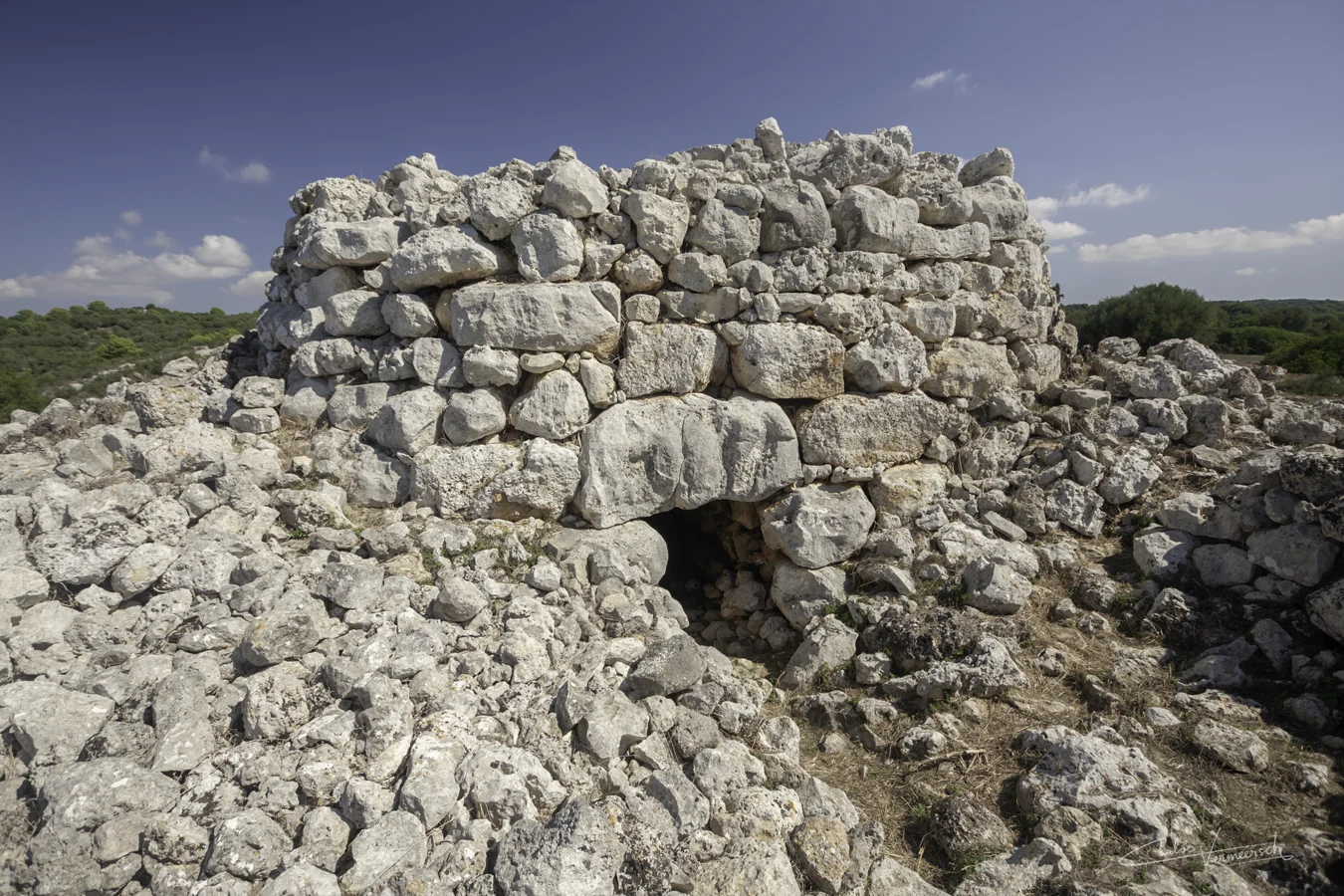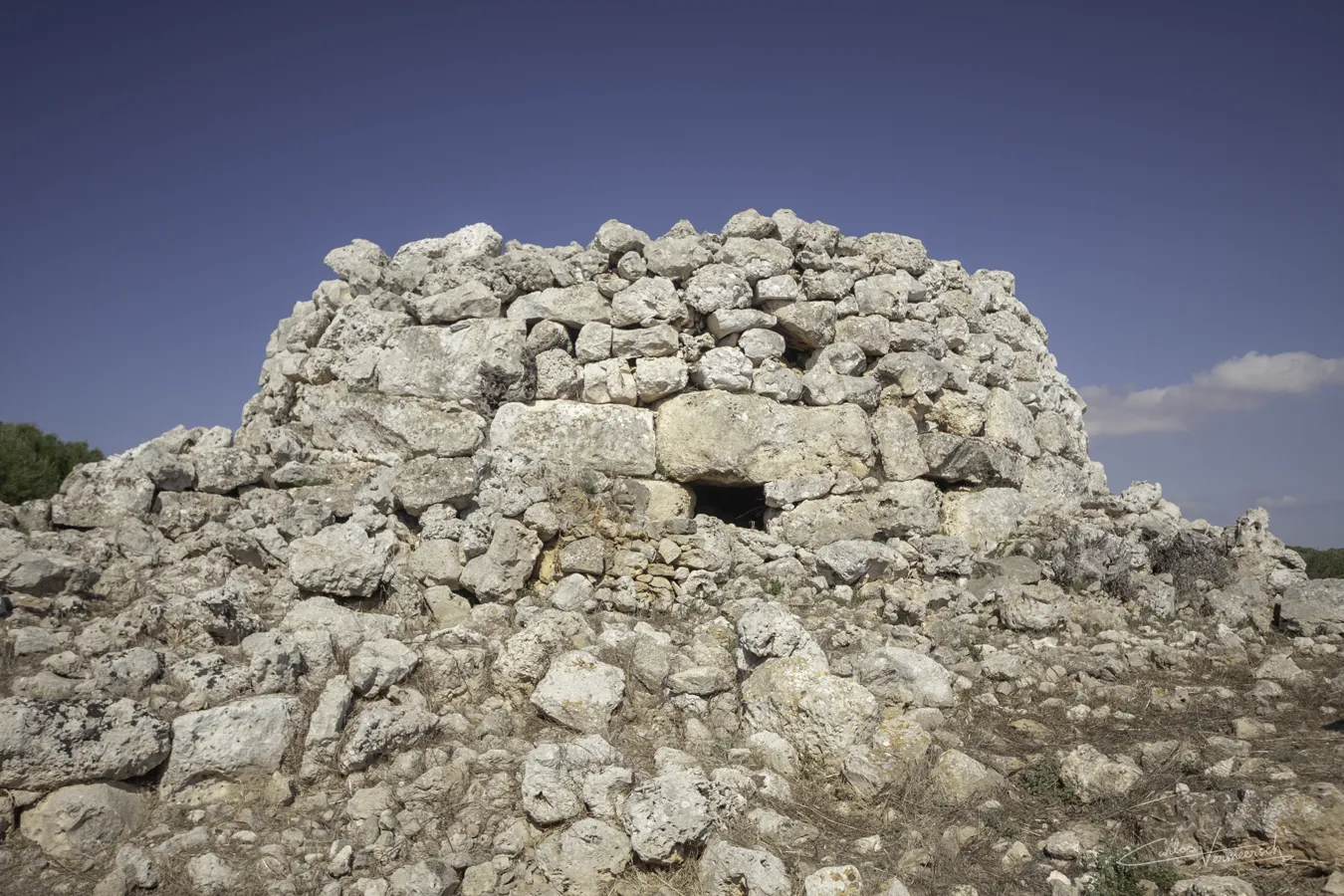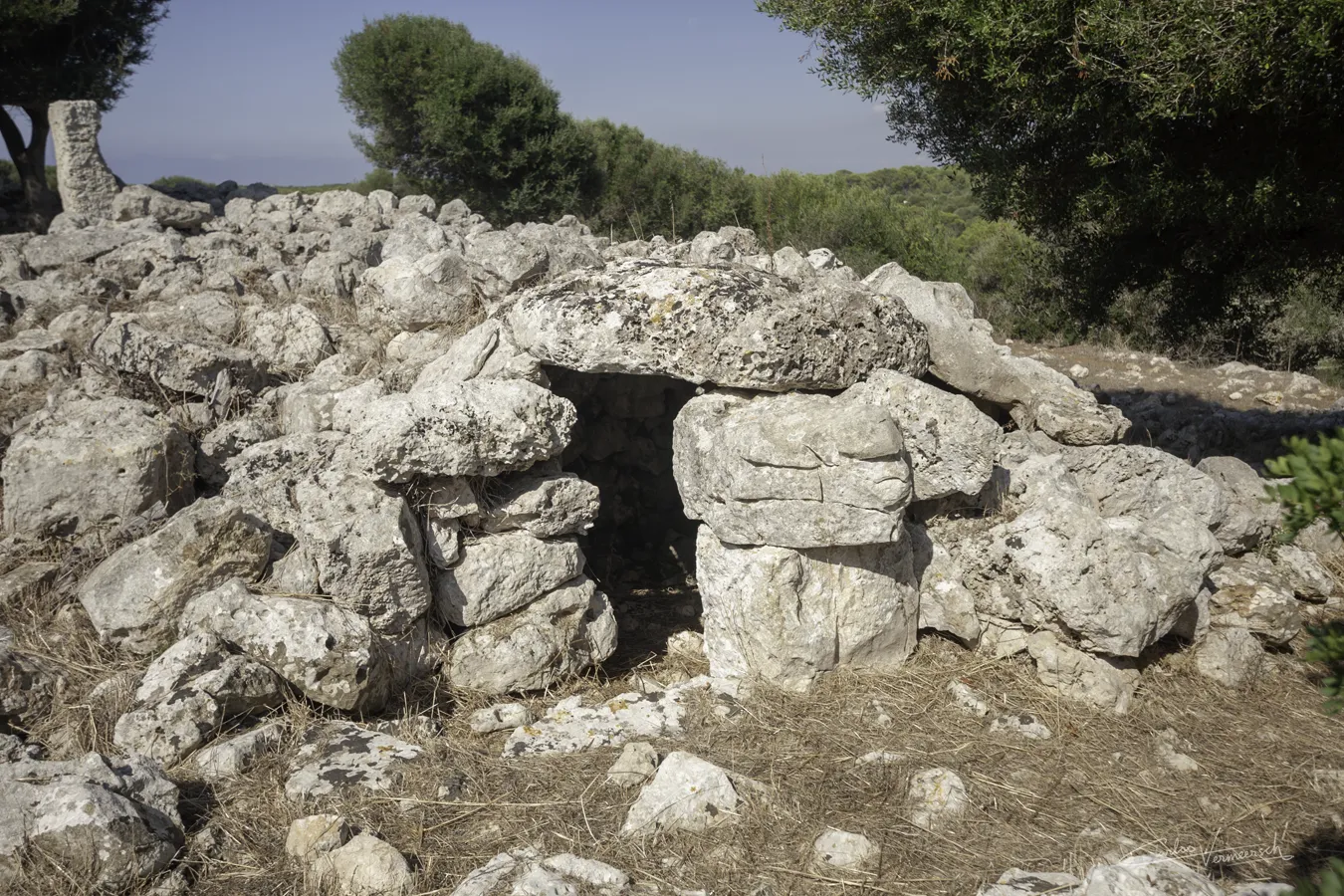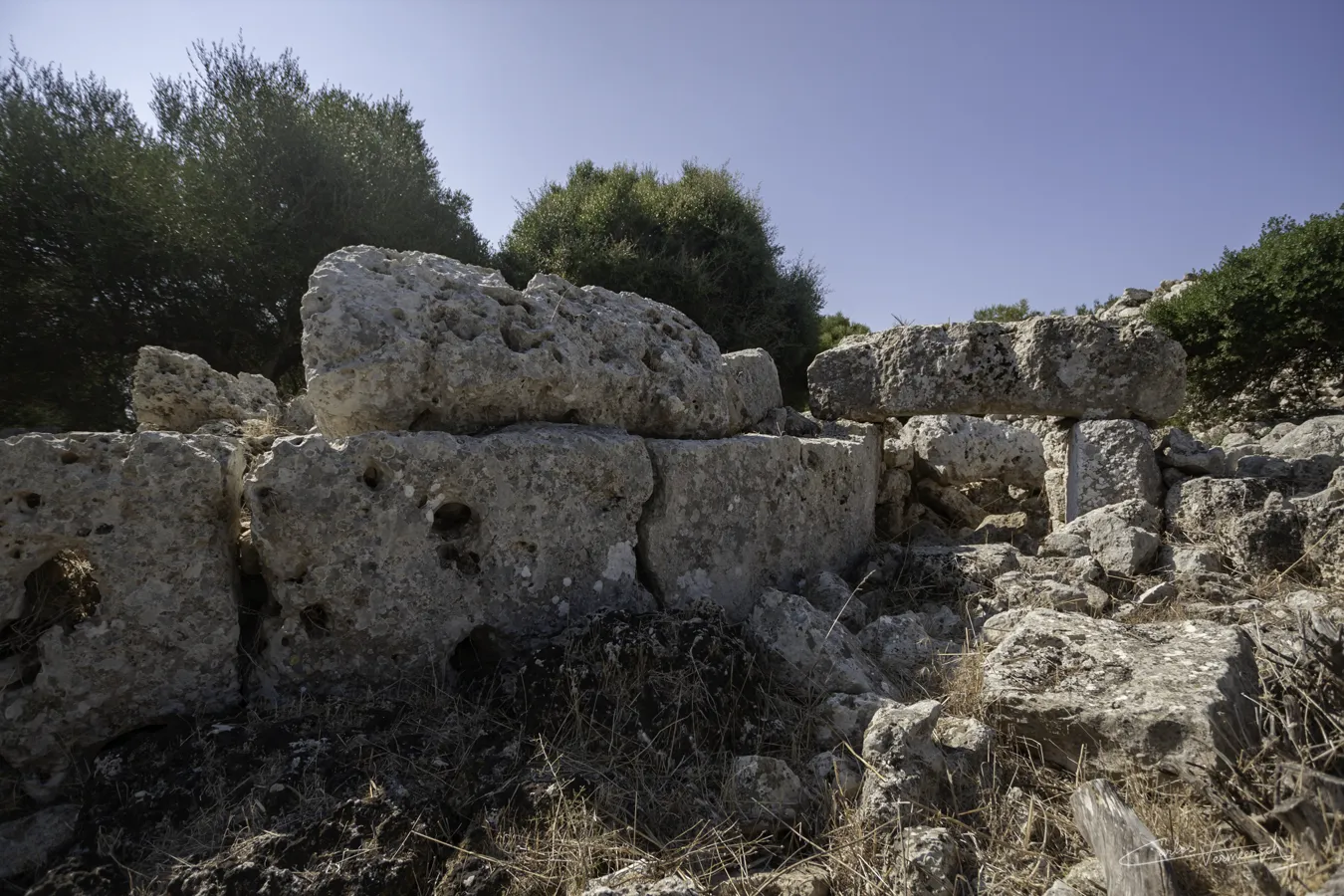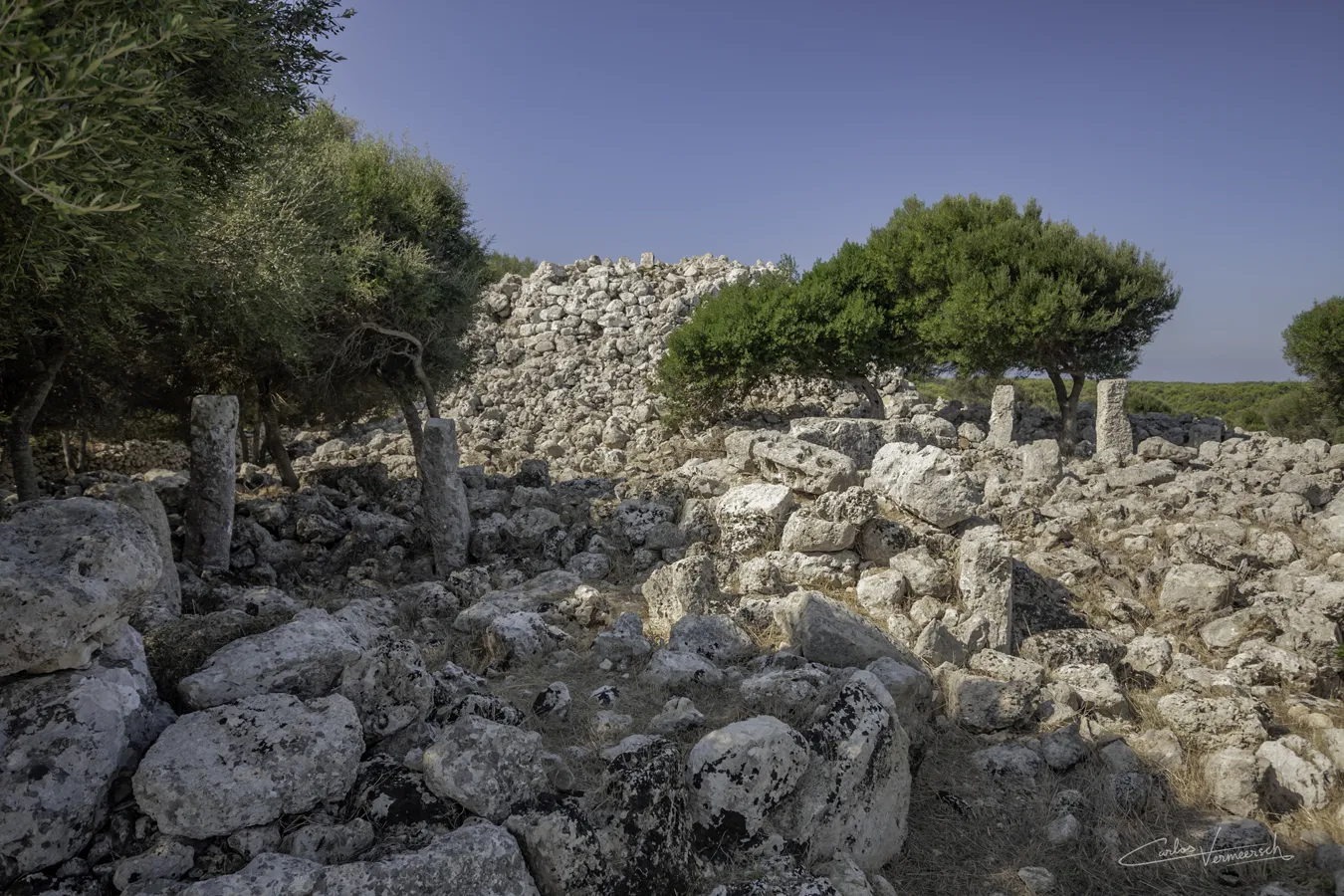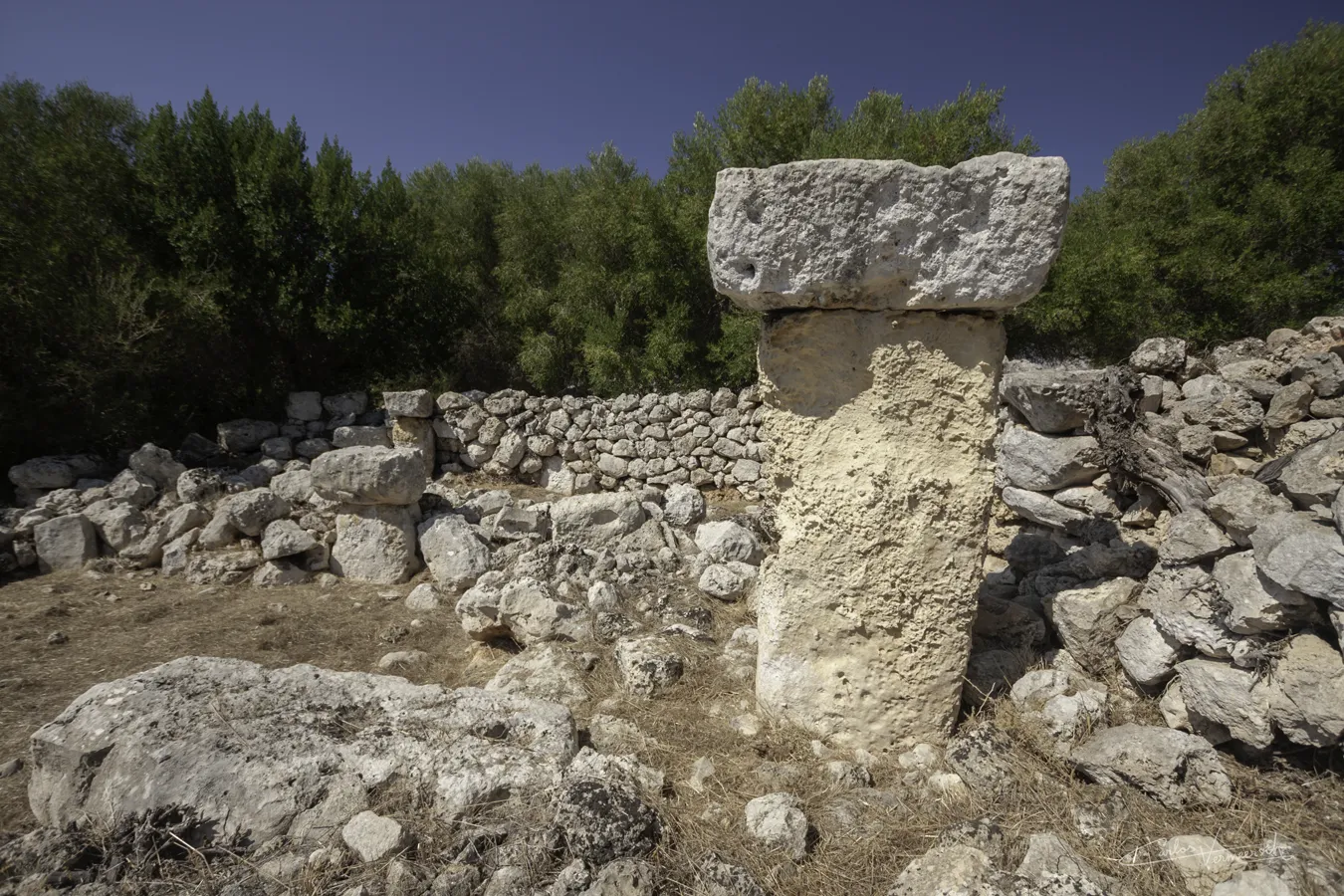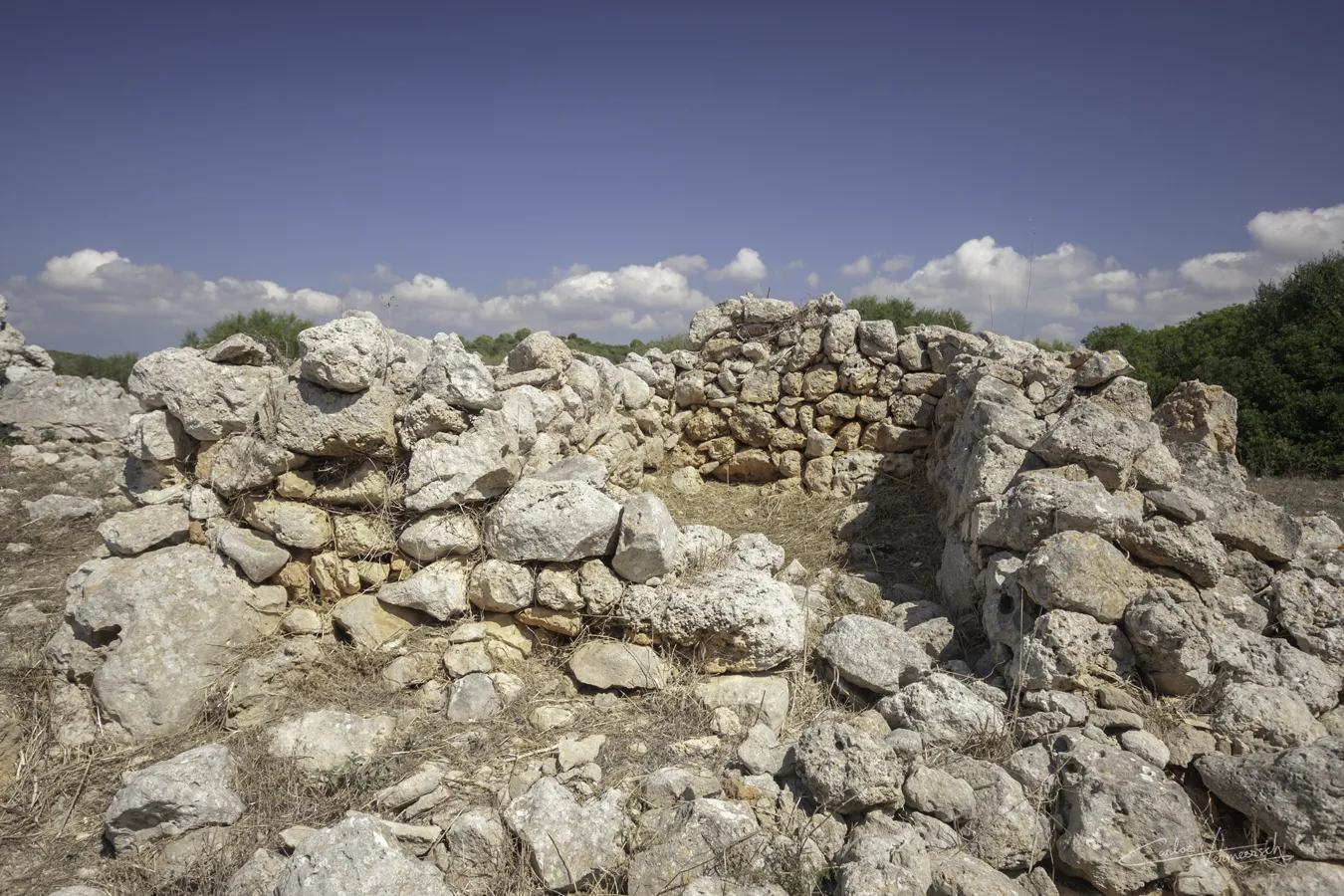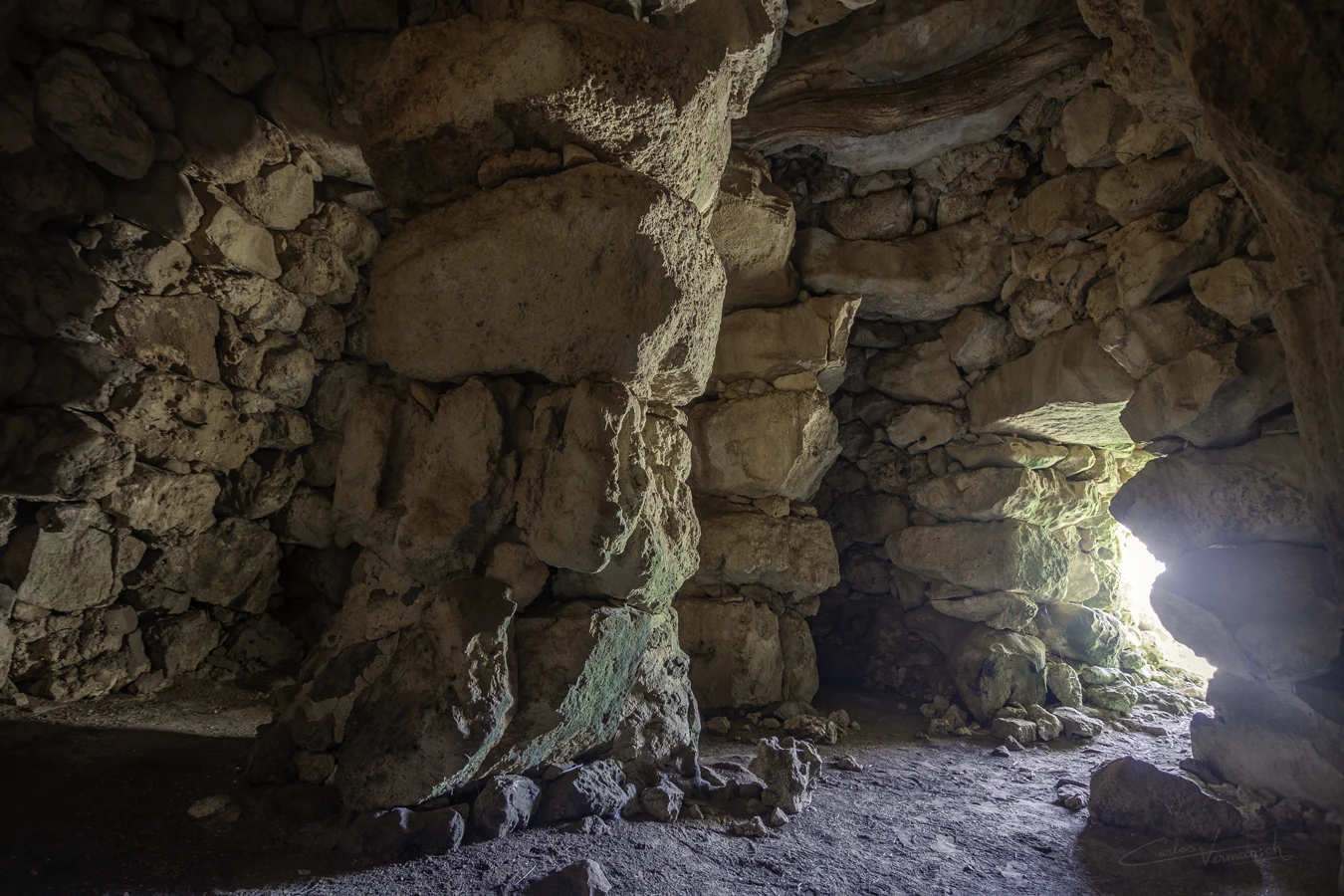Sant Agustí Vell
- Carlos Vermeersch
- Feb 5, 2018
- 2 min read
Updated: Apr 6
Chronology
1500 BC (Pre-talaiotic) — 600 BC (Talaiotic III)
The village is very little explored, despite the fact it might be one of the largest prehistoric settlements on the island. It includes two talaiots, two possible taula sanctuaries, several ruins of houses of which some pillars still remain, and a rain water collection system composed of small reservoirs located at the base of the talaiot. Near the village there are several hypogaea and caves, mostly natural, such as the "Cova des Coloms" of a remarkable height, about 20-25 m tall.
The eastern talaiot (Ses Bigues de Mata)
Chronology
Talaiotic Ia (1400-1150 BC)
Radiocarbon dating of a lentisk beam: 1100 BC
Dimensions
Structure: 12.8 m (diameter) × 6 m (height)
Chamber: 6.8-7.3 m (diameter) × 4.2 m (height)
Corridor: 3.5 m (length) × 2.3 m (height)
The eastern talaiot, also known as Ses Bigues de Mata, is the largest of the village and it is considered to be the largest hollow talaiot of the Balearic Islands. It has a circular plan and a shape of a truncated cone, and it was built with stones of various sizes. A gate points south-southwest and is composed of polylithic pillars and a monolithic lintel, which, through a short corridor, leads to the interior. It has a large circular chamber with a high ceiling composed of limestone slabs, supported by three Mediterranean type (wider at the top) polylithic pillars of unhewn boulders—two freestanding pillars and one embedded pillar—originally aided by several lentisk beams of which only one remains. There is also a similar second gate on the eastern side of this talaiot, though it is unknown where it may have led.
There might have been an upper chamber, however the access to it from the lower chamber has been blocked by a collapse. Another access has been discovered to the supposed upper chamber, to the southeast, likewise blocked. Several structures are attached radially to the talaiot: several houses and a rectangular-shaped construction attached to the southern side of the talaiot, which bears some resemblance to the southern building of the Cornia Nou settlement.
